Please note that the pictures on this page are Copyright and cannot be used for any purpose without the express permission of the owner - © Jack Harrison
June Butterflies in and around Heydon and the Chishills
by Jack Harrison, June 2011
June is the month of “The Browns”, all normally abundant.
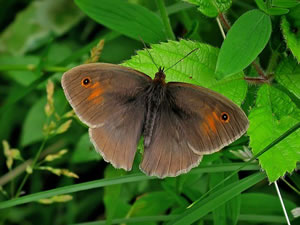
Meadow Brown
This is the first to emerge during the first few days of the month and should be around until the end of August. They can be found anywhere where there is grass. They often stay near the ground but will fly higher to feed on bramble. They are very easy to observe although in hot sunshine, the males can be quite restless.
Males and females are slightly different in appearance with the females having more extensive orange patches on their wings.
Males and females are slightly different in appearance with the females having more extensive orange patches on their wings.
Ringlets
Ringlets can be seen towards the end of June month and throughout July often in large numbers. They are slightly smaller than Meadow Browns but most easily distinguished by their almost black appearance. The underside (shown) has the prominent rings – hence the butterfly’s name. Another useful way to distinguish from Meadow Brown is that the Ringlet has white fringes to the wings. Ringlets often share their habitat with Meadow Browns but Ringlets prefer slightly damper and often more shady conditions. Like the Meadow Brows, Ringlets stay near the ground expect when feeding on flowers.
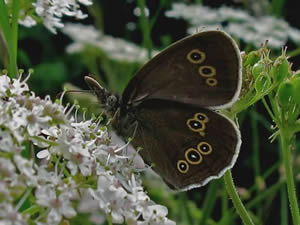
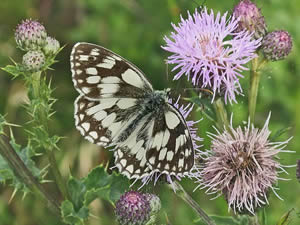
Marbled White
Despite its name it is not a member of the white family but is in fact a “brown”. But that is what it is called although I would prefer a name such as “Chequered Brown”.
Marbled White has been one of the success species over the past ten years. Before the turn of the century, it had no colonies in East Anglia except in the extreme south of Essex. But it has spread rapidly in recent years and can be found in some of the grassland in and near our villages. There is no difficultly identifying this species even when seen flying.
They start appearing towards the end of June but have gone within a month. Marbled Whites love to feed on Knapweed flowers.
Marbled White has been one of the success species over the past ten years. Before the turn of the century, it had no colonies in East Anglia except in the extreme south of Essex. But it has spread rapidly in recent years and can be found in some of the grassland in and near our villages. There is no difficultly identifying this species even when seen flying.
They start appearing towards the end of June but have gone within a month. Marbled Whites love to feed on Knapweed flowers.
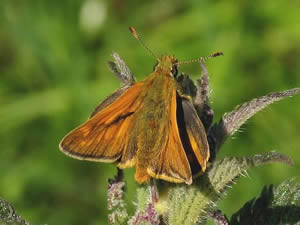
Skippers
Skippers are small butterflies that are often confused with moths. In reality though, the distinction between butterflies and moths is not clear cut.
We get two species here in good numbers on grassy areas such as meadows and roadsides.
The Large Skipper (Left) has a much more mottled appearance than the rather plain Small Skipper (right).
Large Skippers might be seen from as early as the first week of June but Small Skippers are unlikely to be out until towards the end of the month. Both species can be still found well into July. The photos show the characteristic resting pose with one pair of wings at an angle to the other pair.
Large and Small Skipper stay near but will feed on low-growing flowers.
We get two species here in good numbers on grassy areas such as meadows and roadsides.
The Large Skipper (Left) has a much more mottled appearance than the rather plain Small Skipper (right).
Large Skippers might be seen from as early as the first week of June but Small Skippers are unlikely to be out until towards the end of the month. Both species can be still found well into July. The photos show the characteristic resting pose with one pair of wings at an angle to the other pair.
Large and Small Skipper stay near but will feed on low-growing flowers.
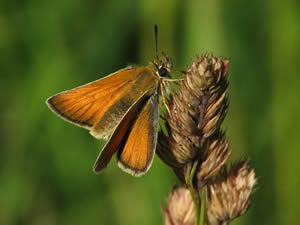
May Butterflies in and around Heydon and the Chishills
by Jack Harrison, May 2011
Red Admiral and Painted Lady
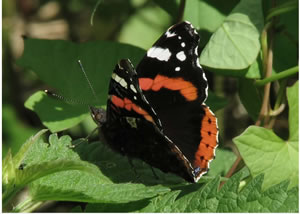

Red Admirals never experience these wild population fluctuations although certainly are more numerous in some years than in others. They love feeding on showy flowers such as buddleia or verbena. They also have a particular liking for ivy flowers and fallen rotting apples (they enjoy the fermentation products)
First Red Admiral of 2011 seen 20th April
Common Blue
It isn’t always common as it name might suggest, but occasionally populations explode. In summer 2010, there were huge numbers over the whole of southern England including our area.
Males and females are very different. Males are purplish blue on the upper wings but females are usually brown with a row of orange half moons round the edge of the wing. Both are shown here.
(The female is in fact egg-laying)
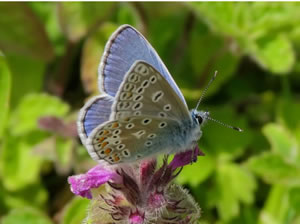
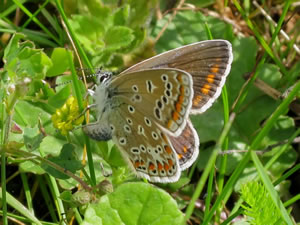
Small Copper
Small Coppers are pugnacious little chaps and will chase off other butterflies many times their size.
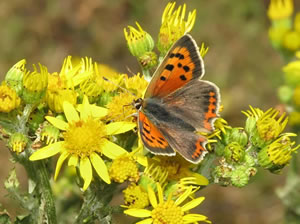
April Butterflies in and around Heydon and the Chishills
by Jack Harrison, February 2011
April is the month when some species that spent the winter as chrysalises emerge.
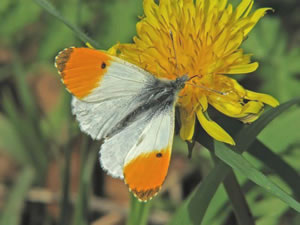
Green-veined White
Green-veined Whites are never garden pests unlike their close relatives, the Small (Cabbage) White and the Large (Cabbage) White. Neither the Small nor the Large Whites are particularly numerous in the spring but the second brood in July they are sometimes seen in huge numbers. The caterpillars of the Large White in particular are very destructive on cabbages and garden nasturtiums
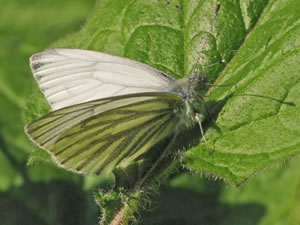
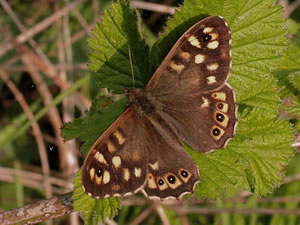
Holly Blue
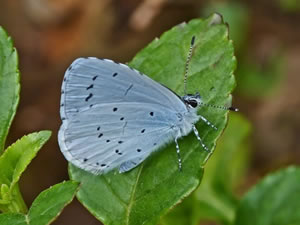
You can get more information from Jack by emailing him at Jack.Harrison@gmail.com, and see more of his pictures at www.snapperjack.co.uk
March Butterflies in and around Heydon and the Chishills
by Jack Harrison, February 2011
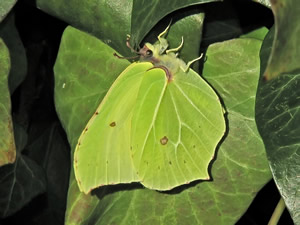
First one seen in Great Chishill in 2011 on 25th February
Peacock


Small Tortoiseshell
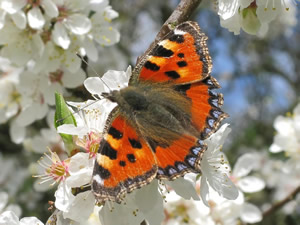
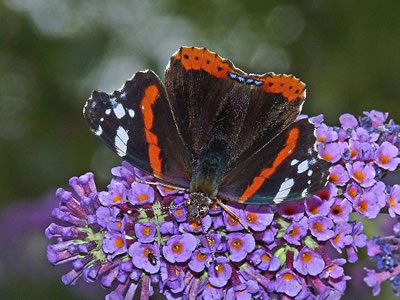
The Butterflies of Great Chishill
by Jack Harrison, July2010
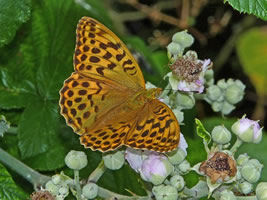
Silver Washed Fritillary (Topside)
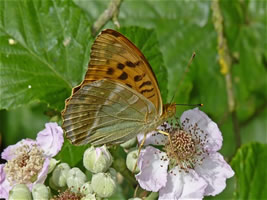
Silver Washed Fritillary (Underside)
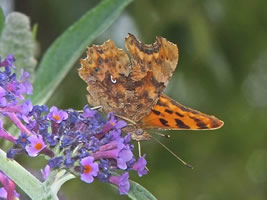
Comma
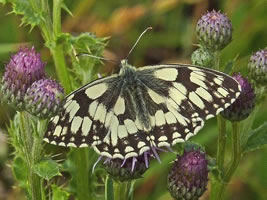
Marbled White
Many people will be familiar with the “big four” that occur in most gardens on flowers such as buddleia from July to the end of August; Peacock, Small Tortoiseshell, Painted Lady, Red Admiral. Painted Ladies are not seen every year; it is an immigrant and although it had an amazing 2009 not one has been seen in my garden in 2010. Another, common butterfly, the Comma , is easily overlooked as it often prefers to feed high up and on top of the blossom out of sight. It is recognised by its jagged wings – this is not damage – and little “comma” marks on the underside.
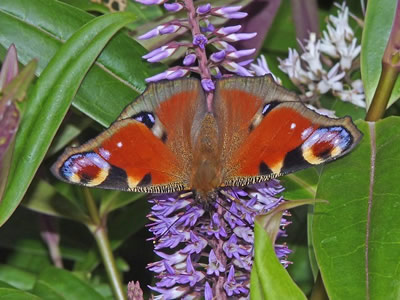
Peacock
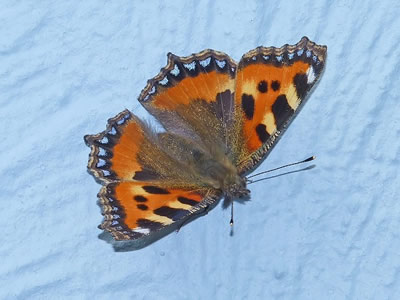
Small Tortoiseshell
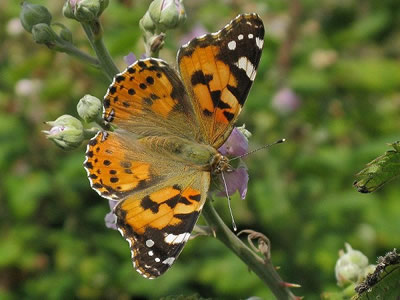
Painted Lady
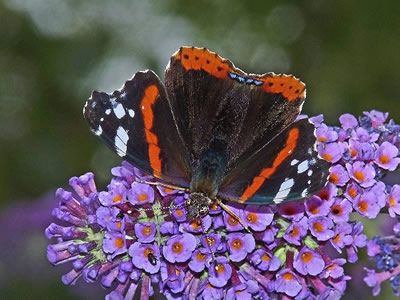
Red Admiral
Several species of “brown” can be seen in this area. The tiny Small Heath is generally regarded as “nationally threatened” although this is a somewhat emotive term; it isn’t all that scarce, merely rarely being seen in large numbers. However, some local grassland is a fine exception in having strongest colony I have encountered anywhere in Britain.
Since I first became interested in butterflies in 1945(!), I have seen many changes. Despite what many people believe, butterflies aren’t doing all that badly today. The main concern – as always – is loss of habitat. But it is certainly encouraging that modern farming methods are far more benign than they were say 20 years ago – field edges, planting of new hedgerows, and so on.
All species of butterflies have flight seasons so don’t for example, expect to see an Orange Tip in August. The best time to see a good range of species is May, June and early July. Flight seasons are now very much earlier – by as much as three weeks - than they were 50 years ago (global warming perhaps). Sadly the dates gleaned from old books are often repeated in newer publications.
Chishill is good for butterflies. We are fortunate. But you do need to look for them; they don’t all come into our gardens.
An excellent website (to which I am a regular contributor) is ukbutteflies: www.ukbutterflies.co.uk
You may also be interested in www.cambs-essex-butterflies.org.uk